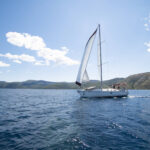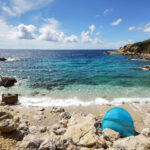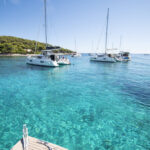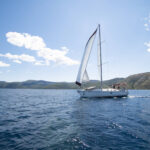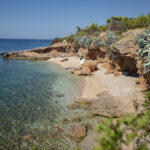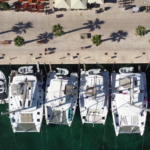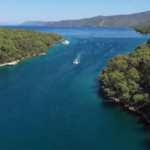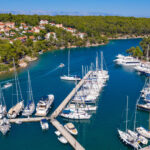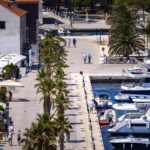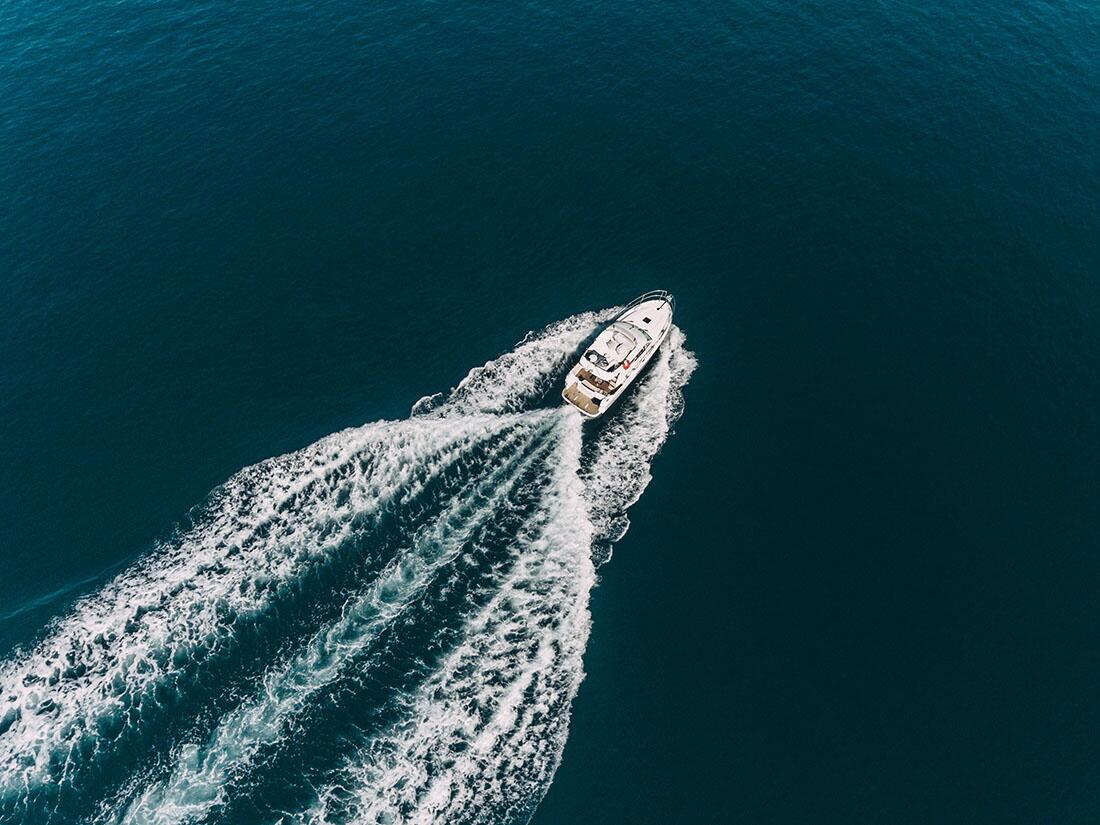
By Boat Around Hvar
If you set off to go round Hvar Island by boat, you have eighty nautical miles of sailing ahead of you. Allow time for your trip: you will want to stop and look at interesting places and enjoy the wonderful coves where you will simply have to swim. Along the coast the landscape is ever-changing – towns and villages, calm inviting bays, crags which hurtle vertically into the sea, beaches formed with shingle, sand or stone slabs… Not forgetting taking the boat on an exploration around the little islands of Šćedro, the naturists’ favourite Zečevo and the Pakleni Islands.
Google SEA View for sea lanes that can display sea routes along the coast of Split-Dalmatia County
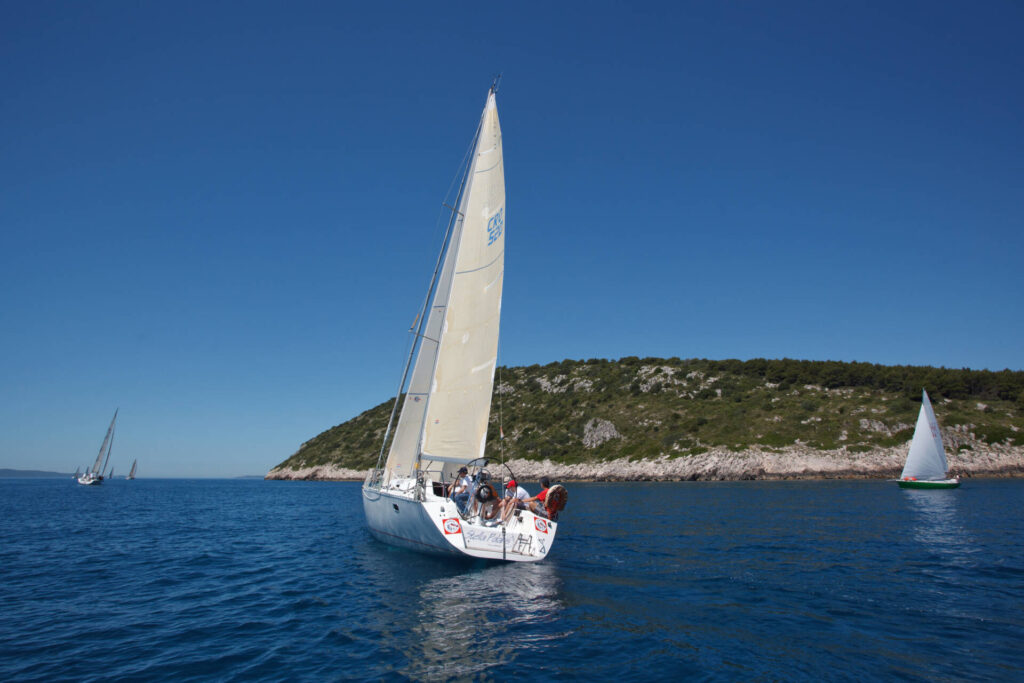
STAY SAFE
Do not take risks: the sea around Hvar is generally calm, but even in summer the winds and waves can suddenly take a turn for the worse. You can hire a small ‘runabout’ boat for very local use, but do not be tempted to venture on to the open sea, especially if you are not experienced. If you have the appropriate documents, you can hire a sailing boat. Even if you have the qualifications for sailing independently, it can be wise to hire a local captain if you are not certain you can handle the conditions. Flotilla sailing is a good option, combining the freedom of having a boat for yourself and chosen companions with travel in a group situation. There are many registered boat charter companies in Croatia, catering to all levels of experience. The charter companies can guide you as to the best choice of boat for your needs. You also need to be aware of local regulations, especially in relation to where you can moor safely and legally.
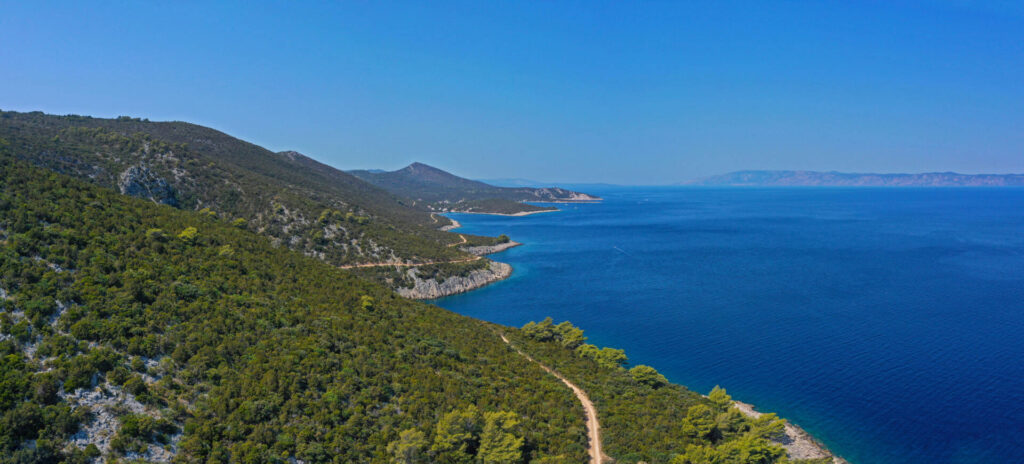
THE NORTH SIDE
The coastline on the northern side of the island, especially around Jelsa, is very varied and indented, with deep, protected bays. As you look at them, it often happens that hostile-looking stony coves end in beautiful beaches, and as you sail from the east near to Jelsa, you come across the only real sandy beaches on the island. Sailing on west from Jelsa you can catch the sun lying on flat stone slabs. On the south coast the inhospitable fissured rocks give way to fabulous beaches and villages with good restaurants. Wishing you calm seas and good sailing!
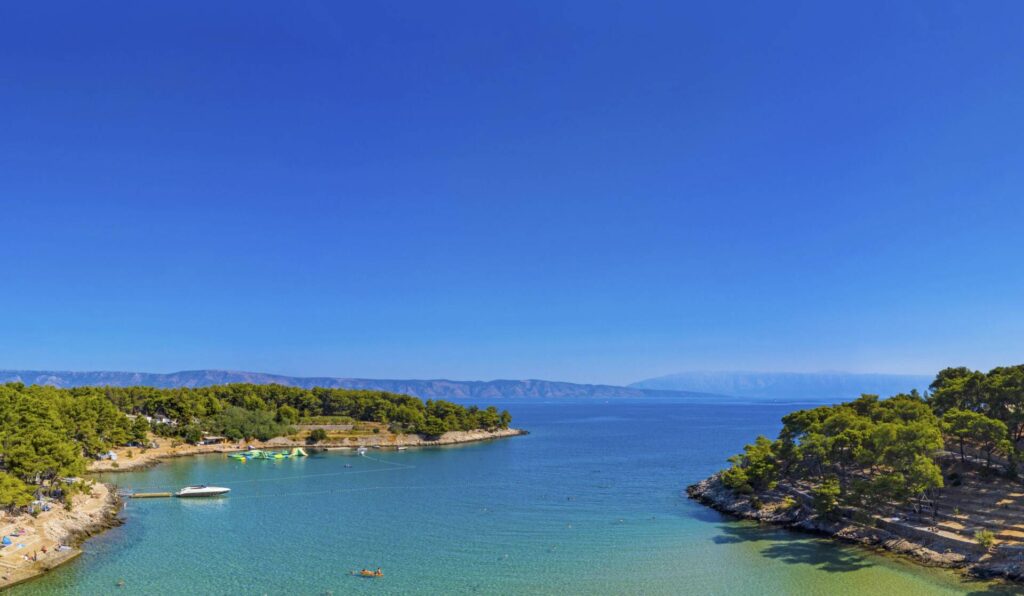
In the summer, sailing is generally pleasant and safe, and the mistral wind will carry you towards the east. Sail west from Jelsa, whose harbour is protected by three breakwaters. Even in a southerly wind the sea is not totally calm, but you must take extra care to secure your boat safely to its mooring when the fierce northerly ‘bura’ blows down from the Biokovo Mountain on the mainland. Vrboska provides secure moorings in all weathers, because of its situation, tucked a mile and half inside a deep inlet. The ACI Marina is in Vrboska. On land the bura is felt quite strongly, but it does not make waves in the bay, whereas the southeast wind does, at times creating a sudden rise in the sea level.
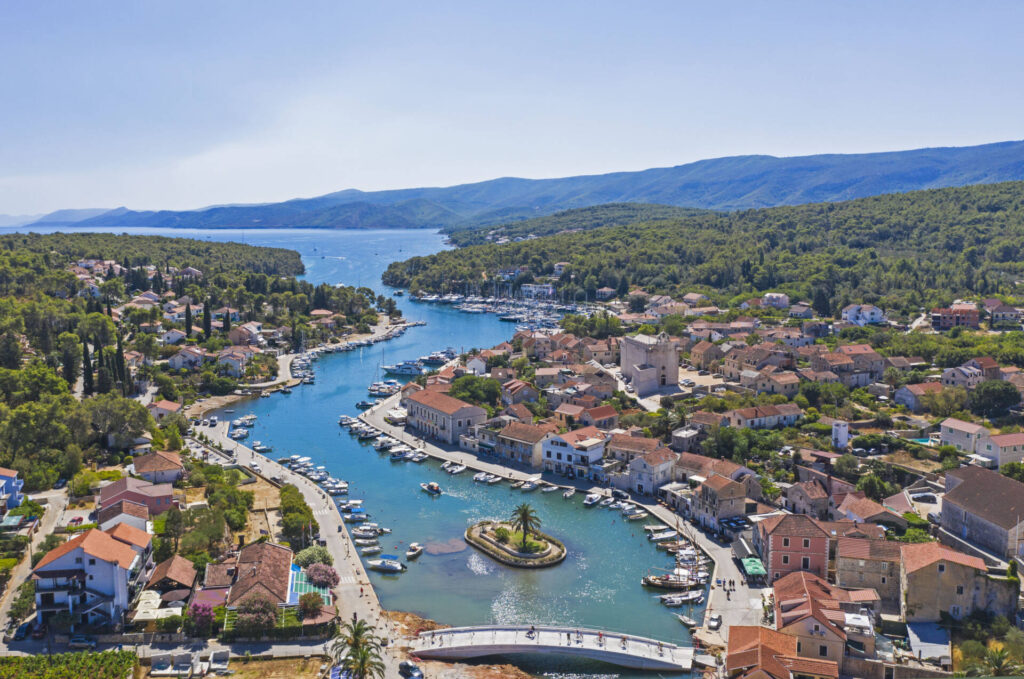
Leaving the exquisite Vrboska Bay, you sail round the Glavica Peninsula and onwards west. Half a mile from the Glavica Headland the islet of Zečevo is on your right, where the southern little bay is protected from the bura, but can be unpleasant when the southerly ‘jugo’ blows.
There are about forty bays along the fifteen nautical miles to Stari Grad, some smaller, some bigger. In this narrowest part of the Hvar Channel, the summer afternoon mistral wind can blow at its strongest, and then you are likely to meet windsurfers racing along from Zlatni Rat in Bol on Brač Island to the Hvar shore and back. For adept sailors a strong maestral is a wonderful opportunity for sailing into the wind.
The journey can continue to the Smočiguzica Headland, then round the Kabal Cape into the Starigrad Channel. From there you will reach the Paklenis Islands and the harbour in Hvar Town. Sailing on towards the east there are coves with extensive beaches and the villages of Ivan Dolac and Zavala. There are plenty of restaurants, while up on the steep hillsides you will see the ‘hanging vineyards’.
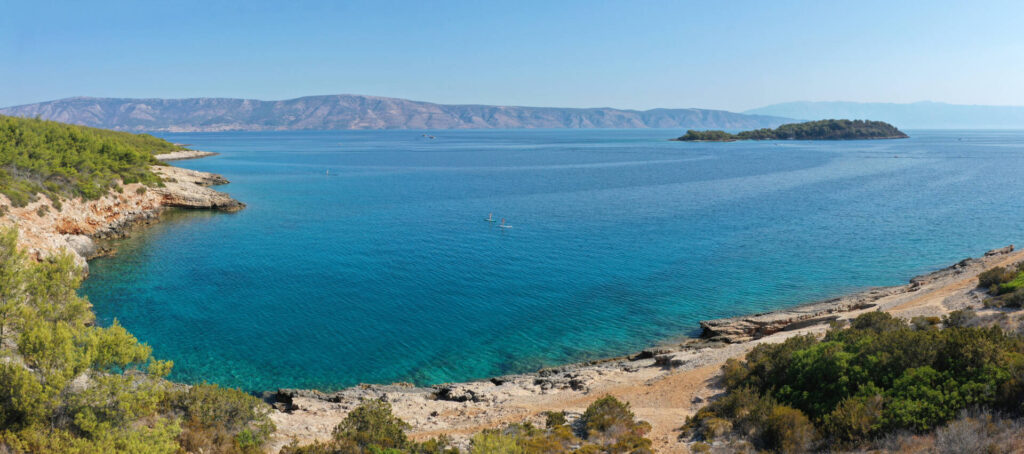
THE SOUTH SIDE
On the south side towards the open sea you will reach Lukavci first, followed by Šćedro. On Šćedro’s north side is the Lovišće harbour with its restaurants, the small village of Mostir, with the village of Nastane up above on a hill. It is best to moor in the Lovišće harbour, preferably on the west boom, which is also called Lovišće. This is the safest place in case of a strong bura, which can be perilous, both here and in the neighbouring little port at Mostir. On the south side of Šćedro there are two extremely beautiful bays, called Čarnjeni and Borova.
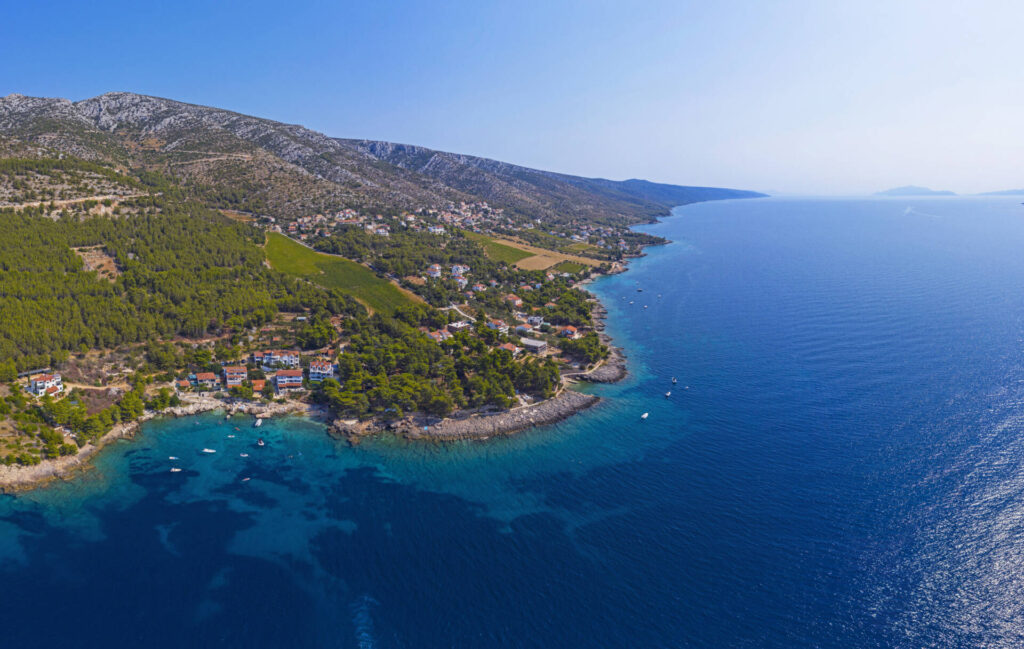
Heading on towards Sućuraj, you reach Gromin Dolac next, and new tourist villages which have been created from the old settlements. The north coast of Hvar Island from the Sućuraj headland towards Jelsa is exposed to potentially perilous northeasterly winds, so you should take extra care. The land falls steeply towards the sea, so there are no large coastal villages here, only small coves with little beaches. Just be careful when the bura blows. Towards the west are the beautiful bays of Pokarvenik, Kruševa, Vela Stiniva, where you can enjoy swimming, although sad to say some of the bays have been spoilt by insensitive building developments.
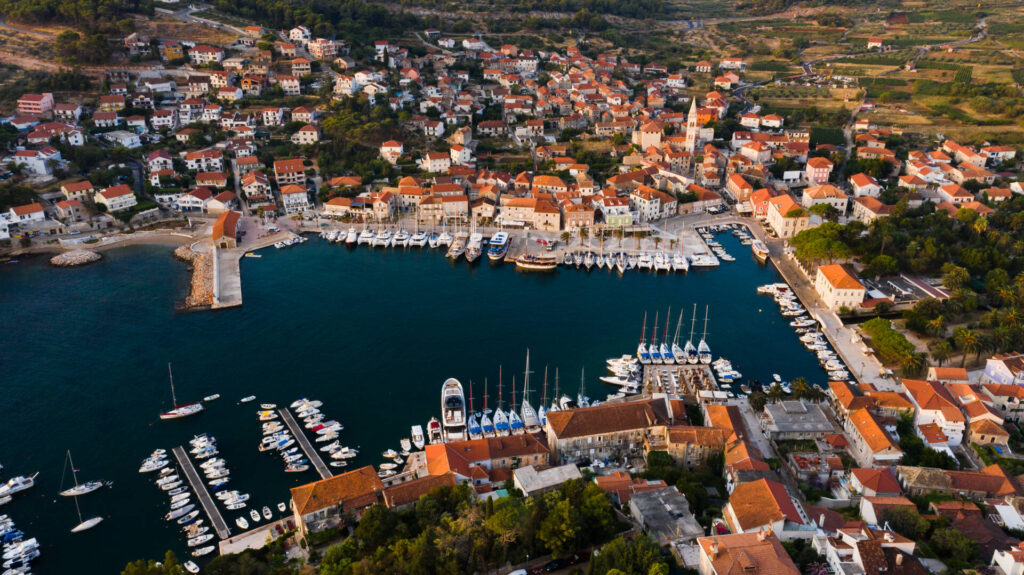
HEADING BACK TO JELSA
On the way to Jelsa are the bays of Mala Stiniva, Makarac and Prapatna, followed by the Jelsan bays of Carkvica, Zenčišće, Grebišće and Mina, the latter two having beautiful sandy beaches which offer good swimming, although you have to sail on to the Jelsa harbour or the Vrboska Bay to moor.




